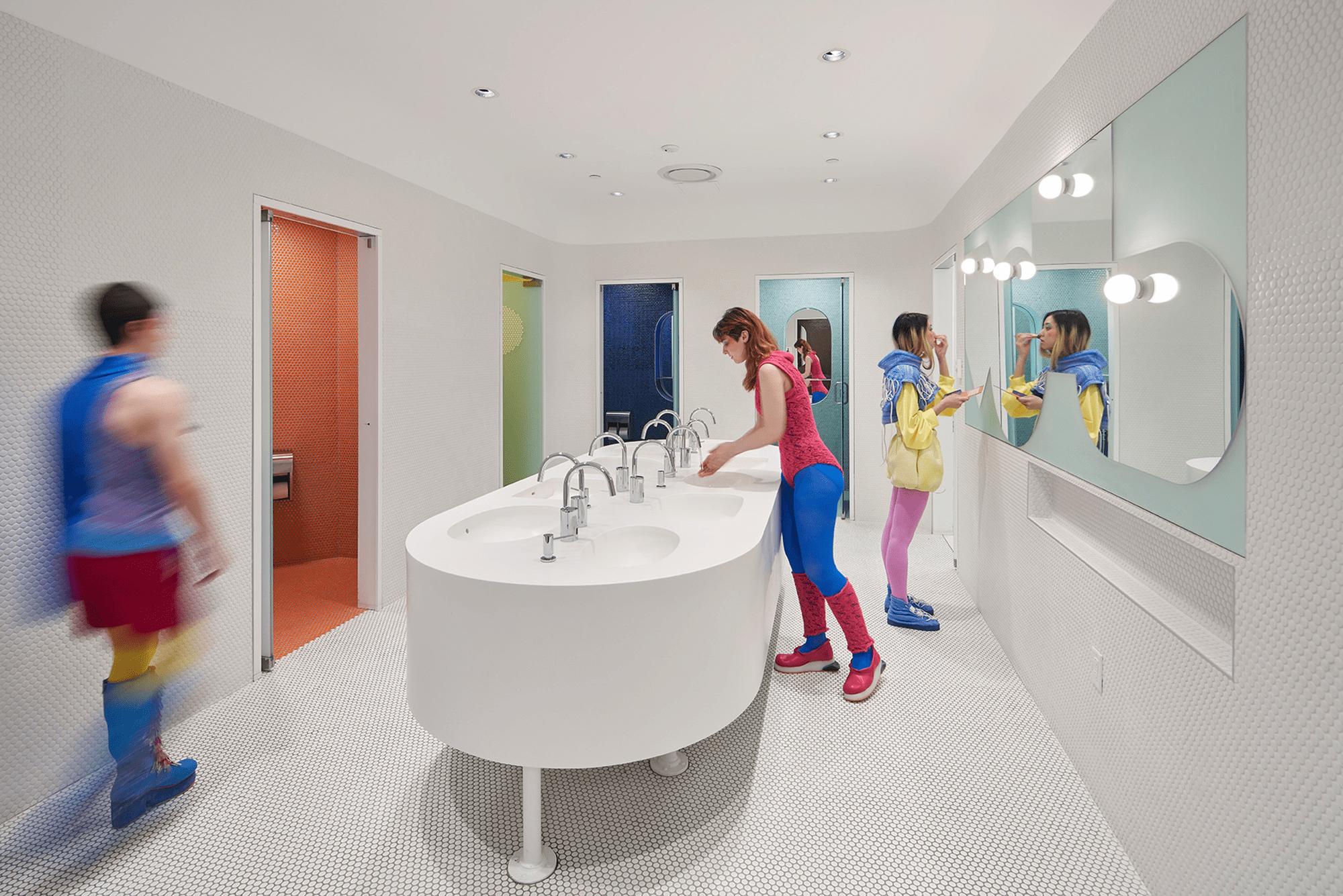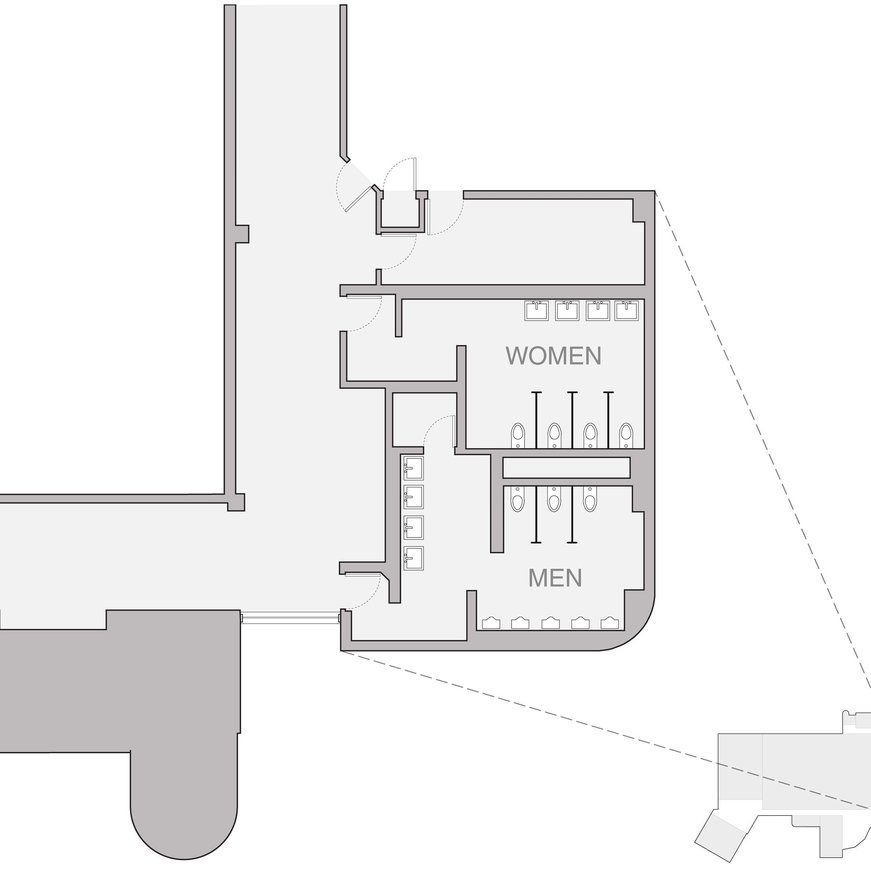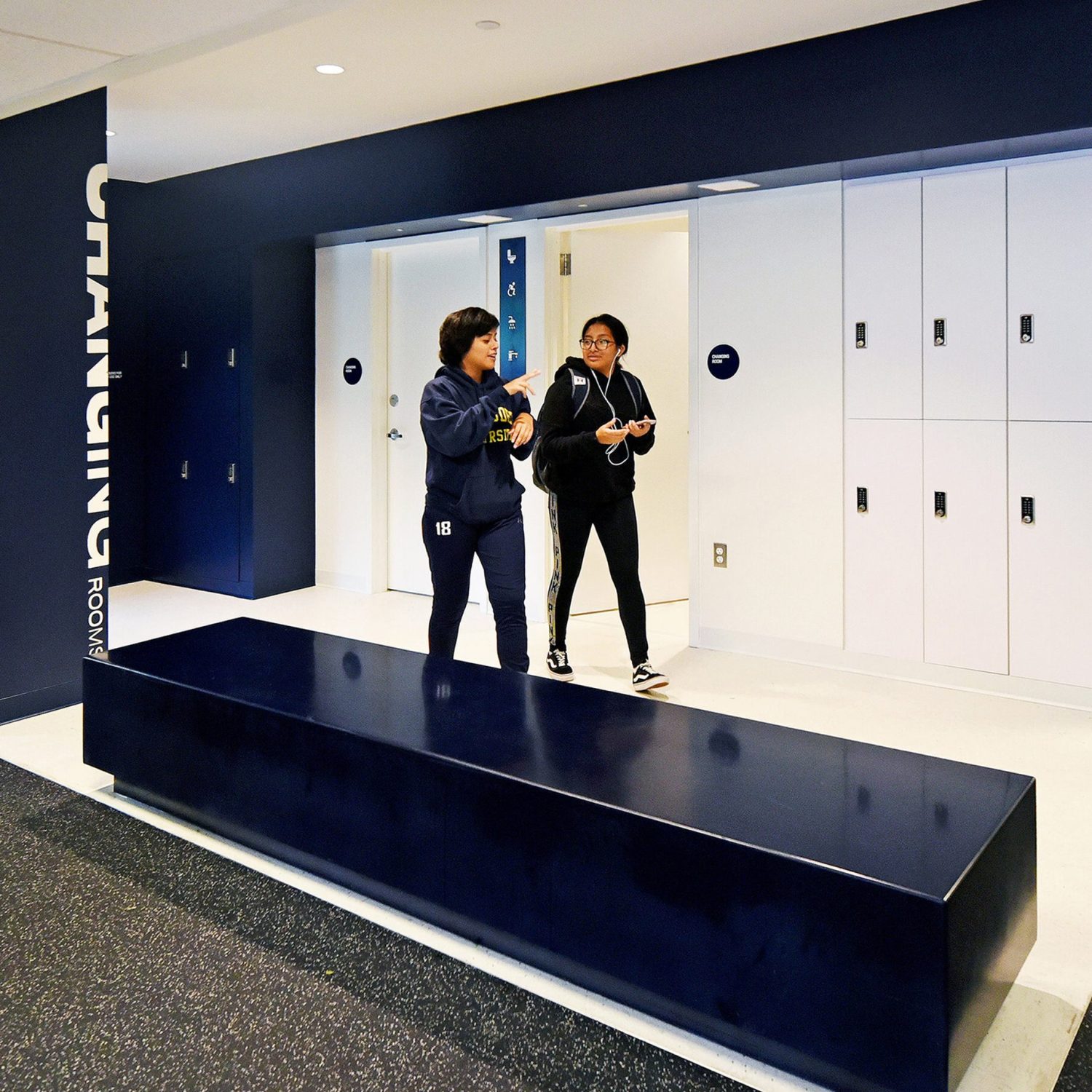DELVE INTO THE IDEA OF AN ALL-GENDER RESTROOM AND EXPLORE THE INTERESTING PROTOTYPE OF THIS RESTROOM
TEXT: PRATCHAYAPOL LERTWICHA
PHOTO CREDIT AS NOTED
(For Thai, press here)
“I must admit that it really hurt my feelings that Rujirawong Swimming Pool refused to let me use the female changing room.”
In early 2020, the Prachathai website published a story of a transgender female student at Chiang Mai University who was asked to leave the female changing room at the university’s swimming pool just because she was trans.¹
Despite her feminine physical appearance, she was compelled to use the male restroom, where, in order for her to feel safe enough to enter, she would always have to wait for the restroom to have the fewest people in it. This is the story she shared on her personal Facebook page.
Individuals have expressed and defined themselves beyond traditional concepts of “men” and “women” especially in this day and age. The gender separation of restrooms is being questioned since not everyone identifies as male or female. These people feel uncomfortable using any sort of restroom due to the fear of being thrown out, stared at, or falsely accused of discomforting or even harassing others. A location where one may comfortably dispose of undesirable bodily waste turns into an uncomfortable and unsafe space for others.
The National Center for Transgender Equality in the United States conducted a survey of a group of transgender people in 2015 to learn about their experiences using public restrooms. From the sample of 27,715 persons, the research found that 12% of them had experienced verbal harassment, 1% had experienced physical harassment, and 9% had been refused access to use the facility.²
All-gender restrooms have become a topic of discussion, with people believing that not only will the new type of restroom help the marginalized as well as male and female users feel comfortable using it, but that it will also help foster an environment where people of all genders can learn to coexist.
All-gender restroom: A restroom for all people
All-gender bathrooms, as the name implies, are intended for people of all genders. They are also known as unisex restrooms, gender-inclusive restrooms, or mixed-gender restrooms, although they all suggest the same meaning. The concept is not new, as it has been implemented in multiple countries like the United States, Canada, China, and Japan. An option has been raised concerning building separate facilities for alternative genders in addition to male and female, but it has been argued that by doing so, people of other genders may end up feeling even more alienated, causing them to be perceived as dangerous.³ So wouldn’t it be better to have all-inclusive bathrooms for everyone?
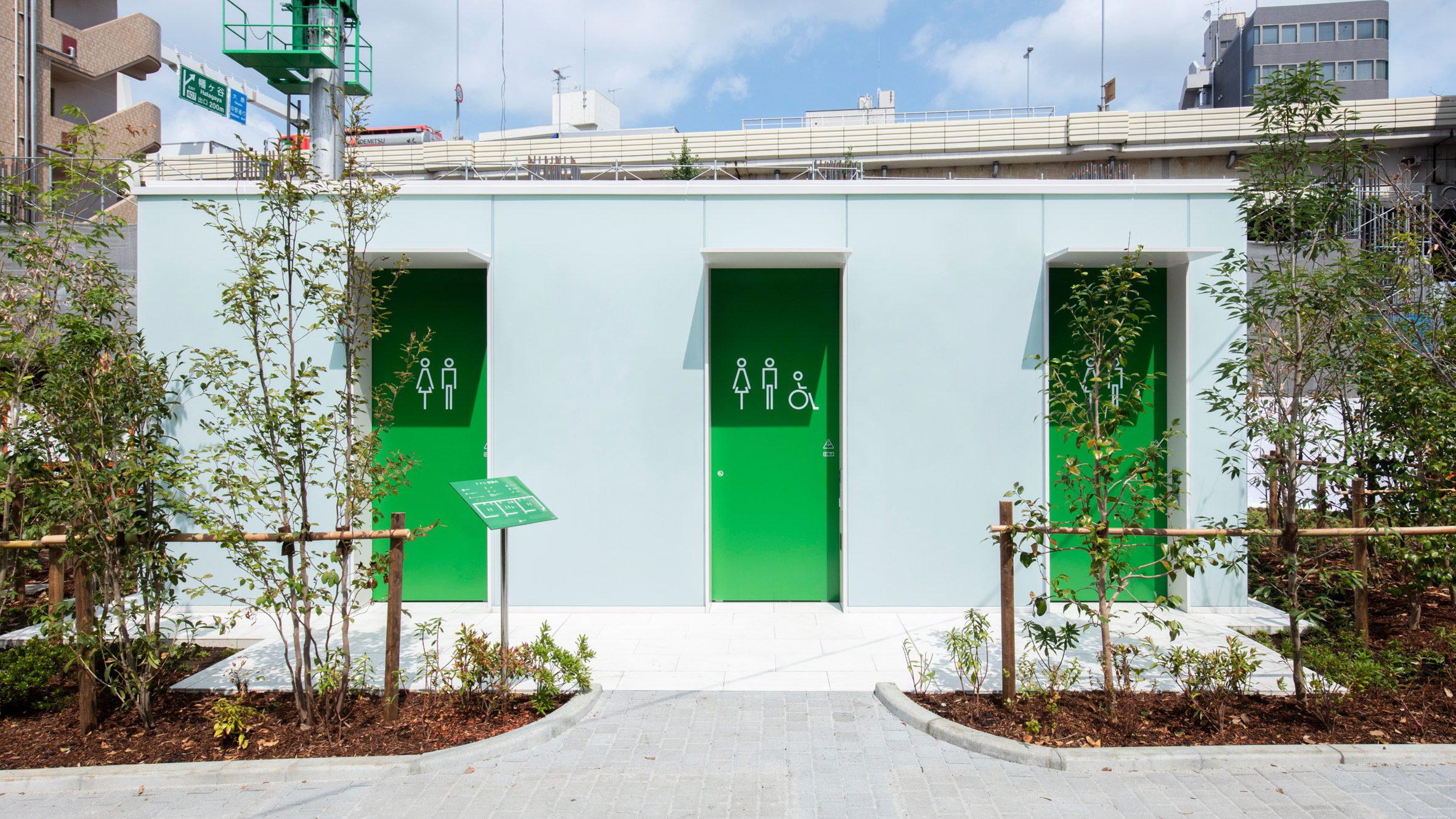
All-gender restroom at Nishihara Itchome Park, Tokyo, Japan designed by Takenosuke Sakakura | Photo: Satoshi Nagare, Courtesy of The Nippon Foundation
All-gender bathrooms are broadly divided into two distinct categories: The single-user type is a standard facility that everyone is familiar with, such as bathrooms in private residences or on airplanes.

All-gender restroom at Nishihara Itchome Park, Tokyo, Japan designed by Takenosuke Sakakura | Photo: Satoshi Nagare, Courtesy of The Nippon Foundation
A multi-user restroom, on the other hand, is built to accommodate many different people at the same time. There are shared facilities, such as washbasins, and a separate facility for each user’s private use, such as the toilet. This type of restroom is quite similar to the men’s and women’s restrooms seen in most public buildings.
The concept of multi-user, all-gender restrooms has been highly debated as to whether it would offer more benefits or drawbacks. People who support the idea think that not only can people of all genders access and use this kind of bathroom, but it is also more convenient for parents or other caregivers to accompany young or elderly users and provide them with any assistance they may need. In addition, there is research whose data suggests that all-gender toilets reduce the amount of time women spend waiting to use the restroom.⁴

All-gender restroom in RISD Student Success Center designed by WORKarc | Photo: Bruce Damonte

The isometric drawing of the all-gender restroom in RISD Student Success Center designed by WORKarc | ©WORKarc
Those who oppose express concerns about user safety, particularly for a young or female user who will have to share the space with male users. All-gender bathrooms don’t sound like the smartest idea in areas where there are strict religious prohibitions or a tendency for violence towards persons of marginalized genders, considering the risk of controversy or violent acts they could incite.⁵
Nonetheless, arguments have been brought up to counter the safety issues, claiming that all-gender restrooms would have more users coming and departing than conventional restrooms and that having such a high volume of users can alleviate worries about user safety and sexual harassment.⁶
Interesting All-Gender Restroom Prototypes
Discussions about the issue continue, and while there is still no official international standard or guidelines for all-gender restrooms, numerous groups of designers have come up with new ideas to create all-gender facilities that cater to every user.
Stalled! is a collective of designers, historians, and legal experts from the United States who have joined together to develop a new paradigm for user-friendly, all-gender restrooms. Stalled! proposes an even greater notion of an inclusive restroom that encompasses broader and more comprehensive aspects of users, such as religions or physical impairments, in addition to gender.
One prototype proposed by Stalled! was the renovation of the old restrooms at Gallaudet University, a private, federally chartered research university in Washington, D.C., for the education of the deaf and hard of hearing. The team redesigned the original facilities located on the upper and first floors of one of the university’s buildings.
The wall dividing the men’s and women’s restrooms on the top floor was dismantled and combined into a single facility. The stalls of regular toilets and accessible toilets are located on both sides of the aisle and separated by floor-to-ceiling barriers to offer users privacy. The ‘caregiving rooms’ are located at the ends of both aisles, each with its own sink and mirror for those who prefer a more private space.

The front elevation of the toilet area | ©Stalled!
What’s especially interesting is how Stalled! chose to eliminate the wall between the stalls and the outside hallway and laced seating at the front. They believe that safety is created not by creating more enclosures but by keeping the area visible to the public and users. Keeping the space open discourages malicious people from performing dangerous crimes. The design is shifting people’s perceptions that bathrooms are normally located in confined corners, and Stalled! is showing us that restrooms can be vibrant spaces that add to the overall feel and ambiance of the building.

The isometric drawing of upper floor restroom renovation proposed by Stalled! | ©Stalled!
The design Stalled! proposed for a first-floor restroom has been built into an actual experimental facility for everyone to try using. The area was located near the building’s entrance and had previously been used for storage. Stalled! converted the space into a two-unit bathroom facility with a well-designed sitting area in the front, with the goal of making the building’s entrance way more welcoming and alive.
The facilities were not only created with disabled and elderly people in mind. Each restroom also has a folding diaper changing tray for parents with small children, as well as a washing area for Muslims to perform their cleaning ritual before prayers. Because of its aesthetically relaxing properties, navy blue was chosen as the color of the restrooms. Not only that, but the color’s contrast with the hues of human skin makes sign language more perceptible.
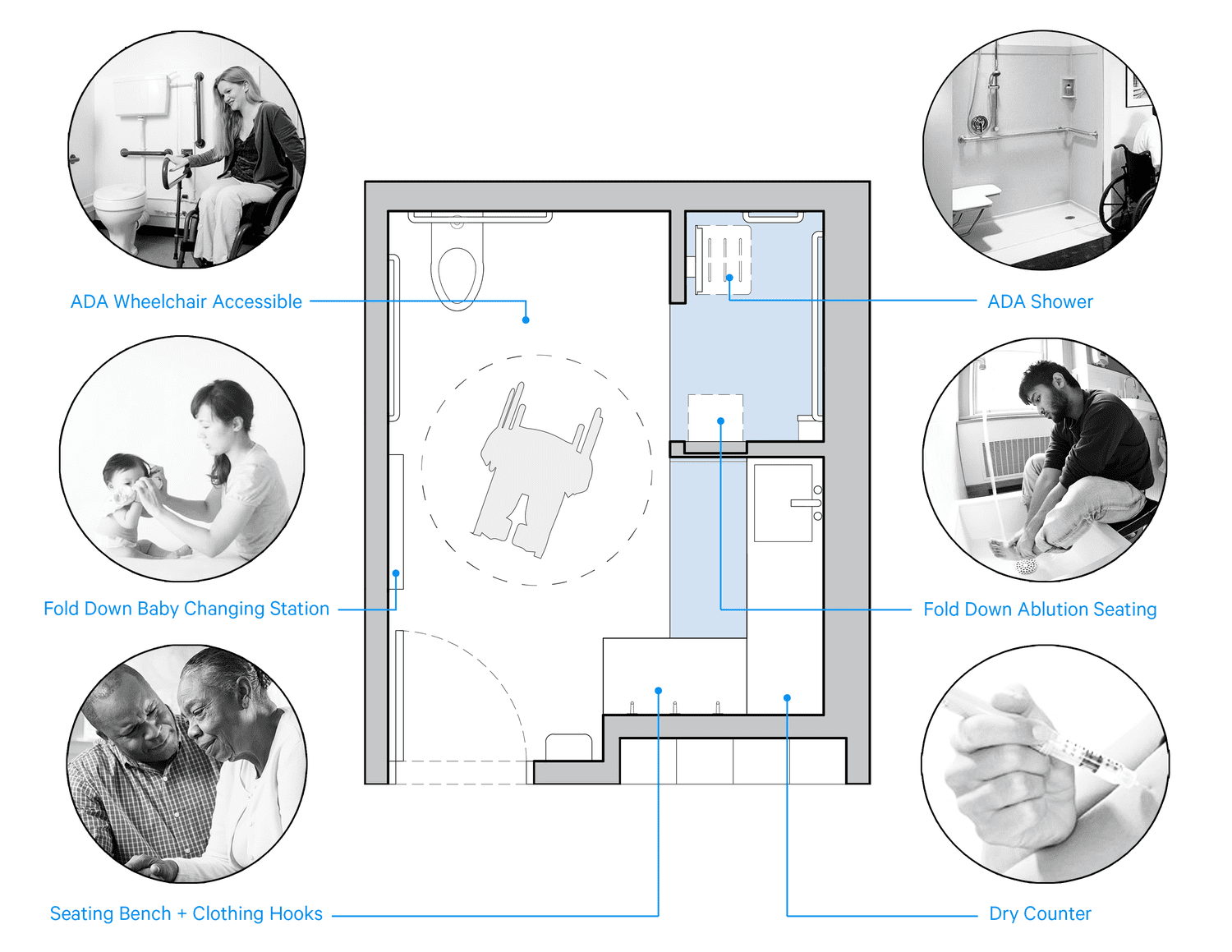
The special facility in the lower floor restroom | ©Stalled!
Aside from these ideas, Stalled! has proposed a model restroom for airports and has written a number of articles on the subject of restrooms and genders on their website, which serves as a great source of information for those interested in finding out more about inclusive restrooms or all-gender restrooms.
All-gender restrooms and Thai society
While there are no true all-gender restrooms in public buildings in Thailand, certain members of Thai society have expressed their opinions over the issue. Several movements have pushed the all-gender restroom agenda forward, such as Mahidol University Student Council who held a referendum on the renovation of the university’s restrooms to be all-gender restrooms⁷ or the National Human Rights Commission of Thailand, which submitted the all-gender restroom agenda to the Thai cabinet.⁸
Truth be told, implementing all-gender restrooms will never be easy. It requires revising the building control legislation. Existing building codes mandate that the number of toilets in a building be proportionate to the estimated number of male and female users and do not include cases where all-gender restrooms would be incorporated. Ideas about all-gender restrooms have been and will continue to be discussed in Thai society, and while there is no definite answer as to whether the idea will work in the way that many have hoped, being able to bring it up for discussion and experimentation marks a promising first step for a society with members who are ready to learn about and accept diversity during a time where ‘gender’ is no longer exclusively identified as ‘male’ or ‘female’.
_
Citation
1 https://prachatai.com/journal/2020/01/85924
2 https://www.reuters.com/article/us-usa-lgbt-survey-idUSKBN13X0BK
3 https://transequality.org/issues/resources/transgender-people-and-bathroom-access
4 https://www.researchgate.net/publication/343082440_The_gender-neutral_bathroom_a_new_frame_and_some_nudges
5 https://washmatters.wateraid.org/blog/sanitation-and-gender-looking-beyond-the-binary
6 https://www.stalled.online/approaches
7 https://www.prachachat.net/education/news-964553
8 https://www.thaipost.net/x-cite-news/96491/

